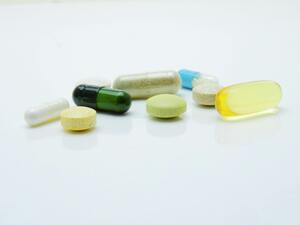
Diabetes Medications Guide
Managing diabetes effectively often requires a combination of medications, lifestyle changes, and ongoing monitoring. For many individuals with Type 2 diabetes, oral medications play a key role in regulating blood glucose levels. These medications belong to different classes, each with a unique mechanism of action. They can be used alone, in combination with each other, or alongside insulin to achieve optimal glycemic control.
Classes of Oral Diabetes Medications and Their Mechanisms
| Class | Mechanism of Action |
|---|---|
| Sulfonylureas | Stimulate the pancreas to produce more insulin. |
| Biguanides | Reduce the liver’s production of glucose and improve insulin sensitivity. |
| Alpha-glucosidase Inhibitors | Slow the digestion and absorption of carbohydrates in the intestine. |
| Thiazolidinediones (TZDs) | Enhance insulin sensitivity in fat and muscle tissue. |
| Meglitinides | Trigger insulin release from the pancreas in response to meals. |
| DPP-4 Inhibitors | Increase insulin release and suppress glucagon secretion in a glucose-dependent manner. |
| GLP-1 Receptor Agonists | Lower blood glucose by enhancing insulin secretion, reducing glucagon, and slowing gastric emptying. |
| SGLT2 Inhibitors | Promote glucose excretion through urine by inhibiting renal glucose reabsorption. |
Medication Classes, Generic & Brand Names, Usage, and Key Considerations
| Class | Generic Name | Brand Name | Comments | When to Take |
|---|---|---|---|---|
| Sulfonylureas | Chlorpropamide | Diabinese | Use cautiously in elderly; may cause hypoglycemia | With meal |
| Tolazamide | Tolinase | Risk of hypoglycemia | With meal | |
| Glyburide | Micronase, Diabeta, Glynase | 1–2 times/day; risk of low blood sugar | With meal | |
| Glipizide | Glucotrol, Glucotrol XL | Take regular form twice/day; XL form once/day | 30 min before meal | |
| Glimepiride | Amaryl | Once daily; may cause hypoglycemia | With meal | |
| Biguanides | Metformin | Glucophage | Avoid in renal, liver, or heart failure; check kidney function | With meal |
| Alpha-glucosidase Inhibitors | Acarbose, Miglitol | Precose, Glyset | GI side effects common; start low, go slow | With first bite of food |
| Thiazolidinediones (TZDs) | Pioglitazone, Rosiglitazone | Actos, Avandia | May reduce contraceptive effectiveness; monitor liver enzymes | Same time each day |
| Meglitinides | Repaglinide | Prandin | Short-acting; use with meals; may cause lows | Before meals |
| DPP-4 Inhibitors | Linagliptin | Tradjenta | Once daily; well tolerated | With or without food |
| Sitagliptin | Januvia | Once daily | With or without food | |
| Saxagliptin | Onglyza | Once daily | With food | |
| Vildagliptin | Galvus | Once daily | With or without food | |
| GLP-1 Receptor Agonists | Exenatide | Byetta | Injectable; typically twice daily | Injection |
| SGLT2 Inhibitors | Canagliflozin | Invokana | May increase urination and dehydration risk | Once daily |
Essential Reminders for Diabetes Medication Use
- These medications work best with a healthy diet, regular exercise, and consistent blood sugar monitoring.
- Always take medications at the same time each day or as instructed by your healthcare provider.
- Routine lab work, such as kidney and liver function tests, may be needed for safety monitoring.
- Report any unusual side effects like fatigue, dizziness, or hypoglycemia to your doctor immediately.
Frequently Asked Questions (FAQ)
What is the safest medication for Type 2 diabetes?
Metformin is often considered the safest first-line medication due to its long-standing track record, low cost, and minimal risk of hypoglycemia.
What’s the difference between GLP-1 and DPP-4 medications?
GLP-1 receptor agonists are usually more effective, can promote weight loss, and are injectable. DPP-4 inhibitors, on the other hand, are taken orally and are less potent but easier to administer.
Can diabetes medications cause weight gain?
Yes. Sulfonylureas, meglitinides, and TZDs may lead to weight gain. On the other hand, metformin, SGLT2 inhibitors, and GLP-1 receptor agonists may support weight loss or be weight-neutral.
Helpful Resources on Diabetes Medications
- Learn more about diabetes medication management from the American Diabetes Association.
- Visit the CDC’s Diabetes Basics page for an overview of treatment options.
- Explore more diabetes research and treatment insights from the NIDDK.
- See a complete list of antidiabetic medications on Drugs.com.
- Read about different types of diabetes medications on Mayo Clinic’s website.
- Review advanced diabetes medication options on UpToDate.
- Check out FDA-approved diabetes medications.
- Learn how nutrition influences diabetes from Harvard’s Nutrition Source.
